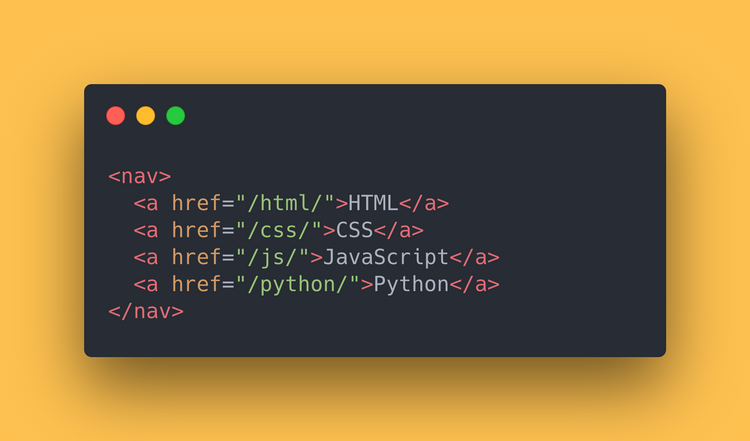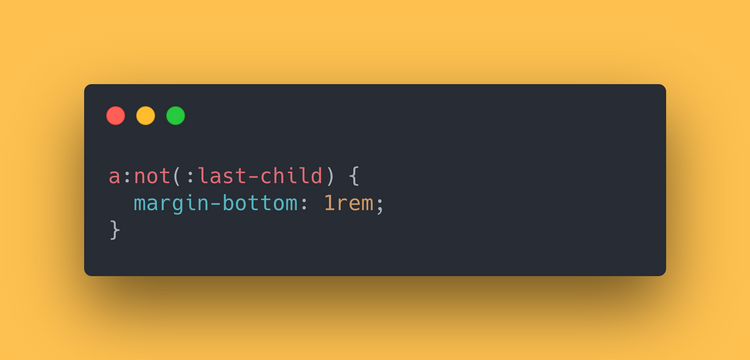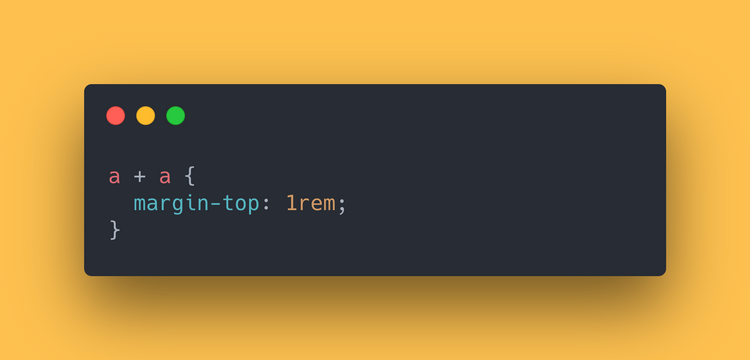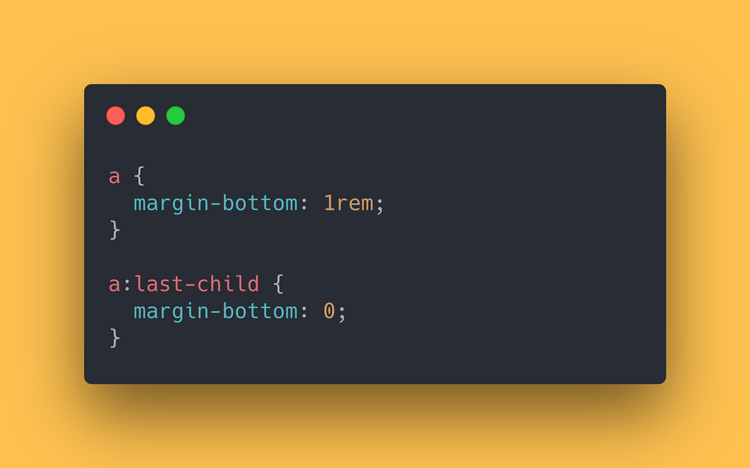Make your CSS Readable and Maintainable with the CSS Enabling Pattern
29 March, 2021 • ☕️ 1 min read

The “Enabling” Pattern is a CSS Pattern that can be explained in 1 sentence.
Instead of using “Disabling” selectors, you should focus on writing “Enabling” selectors.
Now I can hear you thinking.
“What does that even mean?”
Let me show you by example.
What should I NOT do?
Let’s say you’ve created a navigation using HTML:

nav and a tags
<nav>
<a href="/html/">HTML</a>
<a href="/css/">CSS</a>
<a href="/js/">JavaScript</a>
<a href="/python/">Python</a>
</nav>Now you’d like to add a margin to all the “a” tags except for the last one. Here’s the usual, disabling way:
a {
margin-bottom: 1rem;
}
a:last-child {
margin-bottom: 0;
}First, you add a margin to all the “a” tags in the navigation. Then, you disable the bottom margin on the last element.
We call this the “disabling” pattern, because the a:last-child selector disables the previous selector’s rule.
However, we can do better!
What should I do?
Instead of overwriting our previous styling, we can style our navigation using “Enabling” selectors:

a:not(:last-child) {
margin-bottom: 1rem;
}The selector a:not(:last-child) is enabling margin-bottom on all elements except the last one. There’s no need to disable anything.
This will make your CSS not only more readable, but also a lot easier to maintain!
Another great selector that will get you (almost) the same result is the + CSS Selector. Using it like below will get you the same result!

a + a {
margin-top: 1rem;
}In the above example, we add a margin-top to all the “a” tags that have a previous sibling.
This means that all the tags, except for the first one, will have a margin-top added to it.
That’s all there is to it!
That's an Egg
Personal blog by Twan Mulder.
Making your developer life easier, one article at a time.
